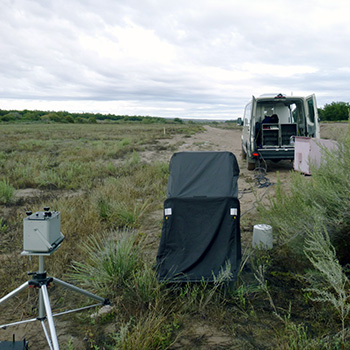
Hantush-Deju National Center for Hydrologic Innovation

Water forms the essential foundation for resilient societies and ecosystems, and catalyzes the evolution of the Earth. Fundamental scientific advances are needed to understand both how much water is available and how it is changing through time from both physical and social drivers.
As stress grows on the world’s water resources, new and immediate approaches are needed to monitor, conserve, and manage water. The Hantush-Deju National Center for Hydrologic Innovation at New Mexico Tech is committed to improving society’s understanding of our water resources to secure a resilient supply of water for future generations.
Collaboration

The Hantush-Deju National Center for Hydrologic Innovation connects faculty, researchers and students at NMT who are interested in fundamental and applied water resources research. Researchers with expertise in earth science, atmospheric physics, engineering, and biology collaborate at the forefront of hydrology
Innovation and Research

Innovation is at the heart of the Center, where technology and multidisciplinary expertise come together to advance basic and applied hydrologic research. Current research focus areas include:
- hydrogeodesy enables the quantification of changes in the water balance at scales ranging from a well field or groundwater basin to that of entire regions. This research to evaluate our changing water balance employs remote sensing and global positioning system measurements of deflections of the surface of the Earth, and gravity measurements to evaluate changes in the land-surface water balance and to quantify fluctuations in the hydrological cycle.
- Harnessing artificial intelligence (AI) to predict flcutations of the water cycle and optimizing resource management. AI provides powerful new tools to understand water resources.
- Groundwater resources, chemical hydrology and water quality, and geology and health.
At the interface of fundamental water science and rapid, applied innovation lies a frontier for growth of knowledge—new sensors and new models driving new understanding of physics, as well as supporting improved management of our water resources. Harnessing these tools, we can enhance water resiliency for today, tomorrow and for decades to come.